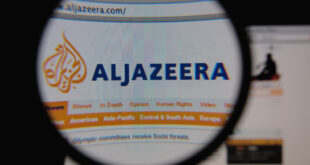China’s navy just learned from a monthlong aircraft carrier training mission how to keep troops safe from COVID-19 and what it would be like to spar with Japan or Taiwan, analysts believe.
The Liaoning aircraft carrier returned to port in eastern China April 30 after passing through western Pacific waters near Taiwan and Japan – putting both on alert due to their political differences with Beijing. Though hardly a first for the carrier, the rising maritime power sent it out for longer this year for more rigorous training.
The People’s Liberation Army Navy probably did “intensive” logistics and medical support work, with civilian help, to keep its flotilla disease free during the global COVID-19 pandemic, said Andrew Yang, secretary-general of the Chinese Council of Advanced Policy Studies think tank in Taiwan.
Naval vessels from Taiwan, the United States and three European countries have been infected this year. The coronavirus that causes COVI9-19 had spread on board because multiple people were stationed there in close quarters.
A disease-free voyage means “they can actually cope with very unique and unusual conditions and at the same time they can still make warships operational,” Yang said.
More longer-term, China’s navy took a lesson over the past month in what it would be like to fight Japan, Taiwan or countries that claim the adjacent South China Sea, said Derek Grossman, senior defense analyst with RAND Corp. research institution. China has not fought a war since the 1979 conflict with Vietnam, Grossman noted.
“The best place to prepare for realistic combat conditions is in the place where you’re going to actually do it, and I think that’s a really important aspect that tends to get lost,” he said.
China’s official Xinhua News Agency described the mission as annual with “trans-theater training in the far seas” this year. It featured a “long duration, many subjects, high intensity and complicated air and sea situations,” Xinhua said.
The flotilla’s “far seas training in real combat conditions has improved and its integrated combat capability has (been) tested,” the news agency added.
The Liaoning has technical obstacles to overcome, too. It lacks the parts for regular maintenance, Yang said. The 8-year-old vessel is shorter than U.S. carriers, as well.
Defense ministries in Taiwan and Japan noted the Chinese carrier’s passing in mid-April but did not challenge it.
Japan and China dispute sovereignty over tracts of sea east of Shanghai. China claims sovereignty over Taiwan, despite the island’s self-rule and public opposition to unification. It has threatened to use force against Taiwan if needed.
Around the 3.5 million-square-kilometer South China Sea, Brunei, Malaysia, the Philippines, Taiwan and Vietnam contest Chinese claims to waters that are rich in oil, gas and fish.
The Chinese naval exercises could spark responses from the U.S. and Australian navies, Grossman said. Both hope to check Beijing’s expansion in the South China Sea.
In Southeast Asia itself, few people are talking about the Chinese carrier, said Alan Chong, associate professor at the S. Rajaratnam School of International Studies in Singapore. That’s because they’re taking face masks and medical aid from China to treat domestic cases of the COVID-19 respiratory disease, he said.
China for example sent 12 medical experts to the Philippines in early April, Chinese television reported. The carrier passed just north of the main Philippine island Luzon.
“Because everybody is using Chinese aid, you can’t speak too loudly about it,” Chong said, referring to the aircraft carrier.
 Eurasia Press & News
Eurasia Press & News

